Discover how a bimodal integration strategy can address the major data management challenges facing your organization today.
Get the Report →Feed Azure Data Lake Storage Data into FineReport
How to set Azure Data Lake Storage data as a JDBC data source in FineReport.
The CData JDBC Driver for Azure Data Lake Storage fully implements the JDBC standard and can provide Azure Data Lake Storage data connectivity to a wide variety of BI, reporting, and ETL tools and custom applications. In this article, we explain how to set Azure Data Lake Storage data as JDBC data source in FineReport and view Azure Data Lake Storage data as a table in the Report Designer.
Set Up a JDBC Data Source of Azure Data Lake Storage Data
Follow the instruction below to set Azure Data Lake Storage data as a FineReport database connection.
- Copy the cdata.jdbc.adls.jar file from the lib folder in the CData JDBC Driver for Azure Data Lake Storage installation directory to the lib folder of the FineReport installation directory. You will need to copy the cdata.jdbc.adls.lic file as well.
- From the Server tab, select Define Data Connection, click to add a new connection, and click JDBC.
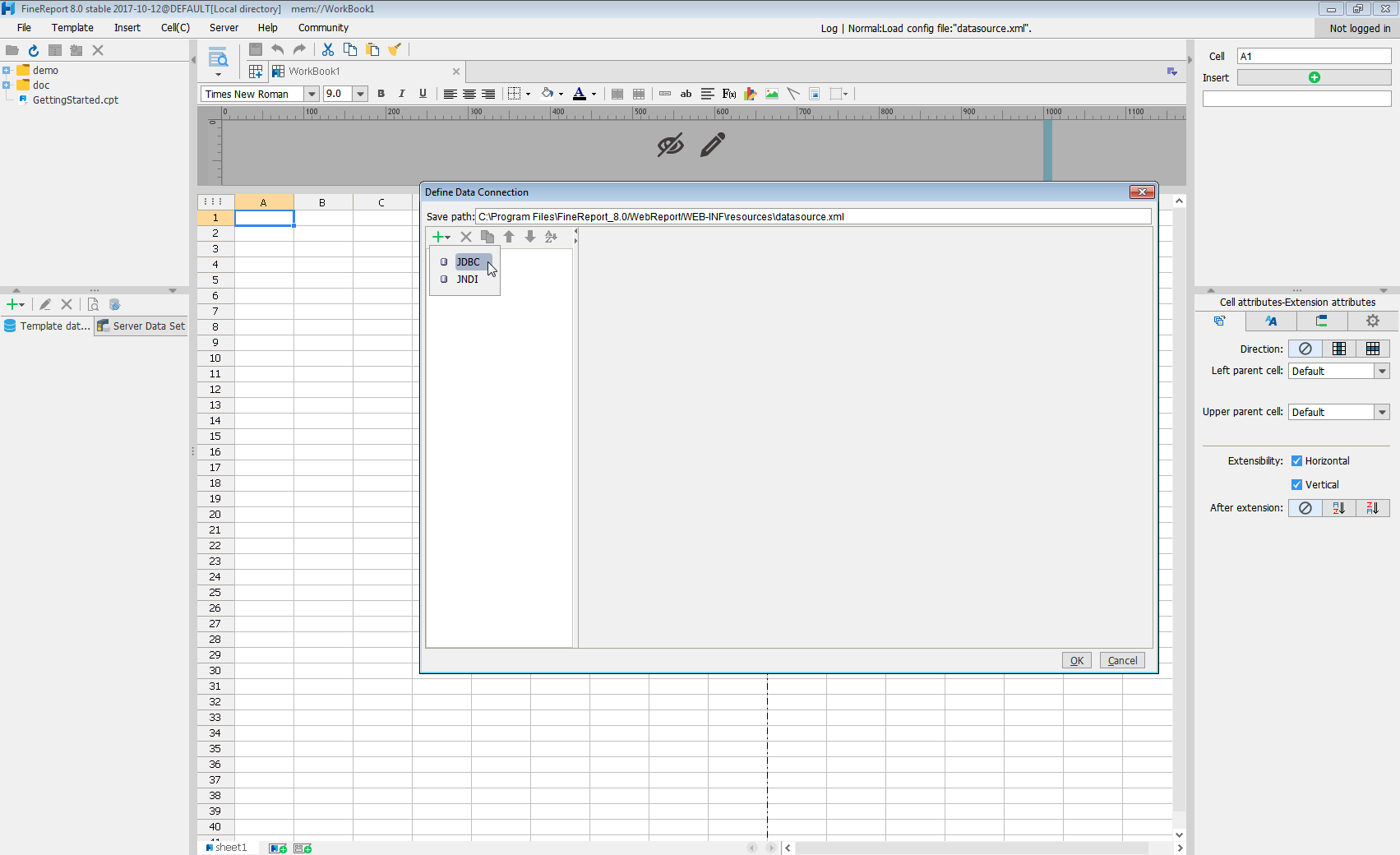
Next we will set up the data connection definition in the window.
- Database: Others
- JDBC Driver: cdata.jdbc.adls.ADLSDriver
-
URL: A standard JDBC connection string using semicolon-separated connection properties.
Authenticating to a Gen 1 DataLakeStore Account
Gen 1 uses OAuth 2.0 in Azure AD for authentication.
For this, an Active Directory web application is required. You can create one as follows:
To authenticate against a Gen 1 DataLakeStore account, the following properties are required:
- Schema: Set this to ADLSGen1.
- Account: Set this to the name of the account.
- OAuthClientId: Set this to the application Id of the app you created.
- OAuthClientSecret: Set this to the key generated for the app you created.
- TenantId: Set this to the tenant Id. See the property for more information on how to acquire this.
- Directory: Set this to the path which will be used to store the replicated file. If not specified, the root directory will be used.
Authenticating to a Gen 2 DataLakeStore Account
To authenticate against a Gen 2 DataLakeStore account, the following properties are required:
- Schema: Set this to ADLSGen2.
- Account: Set this to the name of the account.
- FileSystem: Set this to the file system which will be used for this account.
- AccessKey: Set this to the access key which will be used to authenticate the calls to the API. See the property for more information on how to acquire this.
- Directory: Set this to the path which will be used to store the replicated file. If not specified, the root directory will be used.
Built-in Connection String Designer
For assistance in constructing the JDBC URL, use the connection string designer built into the Azure Data Lake Storage JDBC Driver. Either double-click the JAR file or execute the jar file from the command-line.
java -jar cdata.jdbc.adls.jarFill in the connection properties and copy the connection string to the clipboard.
![Using the built-in connection string designer to generate a JDBC URL (Salesforce is shown.)]()
When you configure the JDBC URL, you may also want to set the Max Rows connection property. This will limit the number of rows returned, which is especially helpful for improving performance when designing reports and visualizations.
A typical JDBC URL is below:
jdbc:adls:Schema=ADLSGen2;Account=myAccount;FileSystem=myFileSystem;AccessKey=myAccessKey; - Click Connection pool attributes and set Test before getting connections to No.
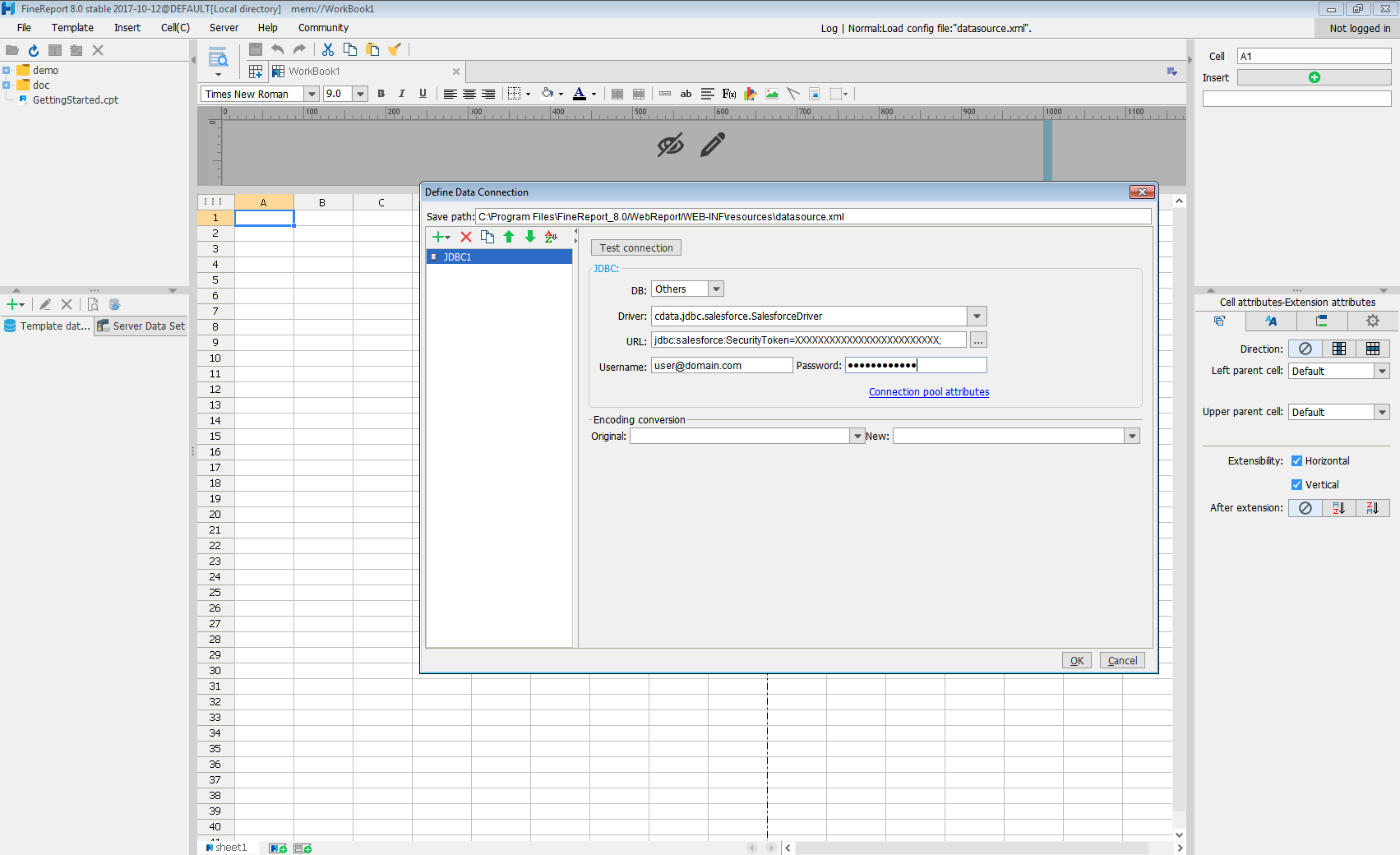
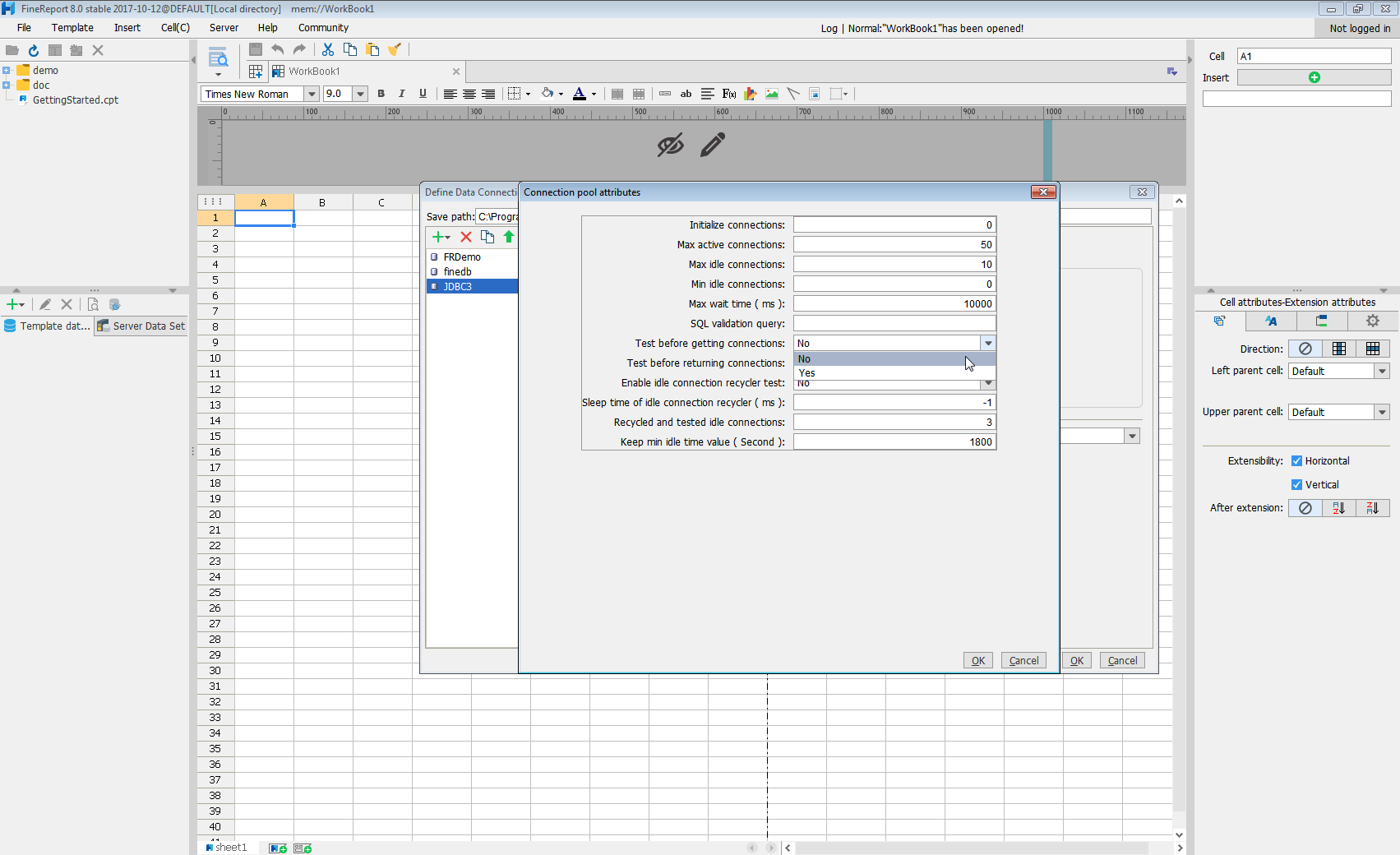
Click Test connection to ensure you have configured the connection properly. With the connection to Azure Data Lake Storage set up, you can use it as FineReport data source.
Select Azure Data Lake Storage Data in the Report Designer.
- Click to add a new template data set and select DB query to open the database query window.
- Choose the JDBC connection that you created from the dropdown list.
- The Azure Data Lake Storage entities will appear as tables on the left pane.
- Write a SELECT statement for the Azure Data Lake Storage data tables and columns that you want to load.
- Click preview and data is shown as table.
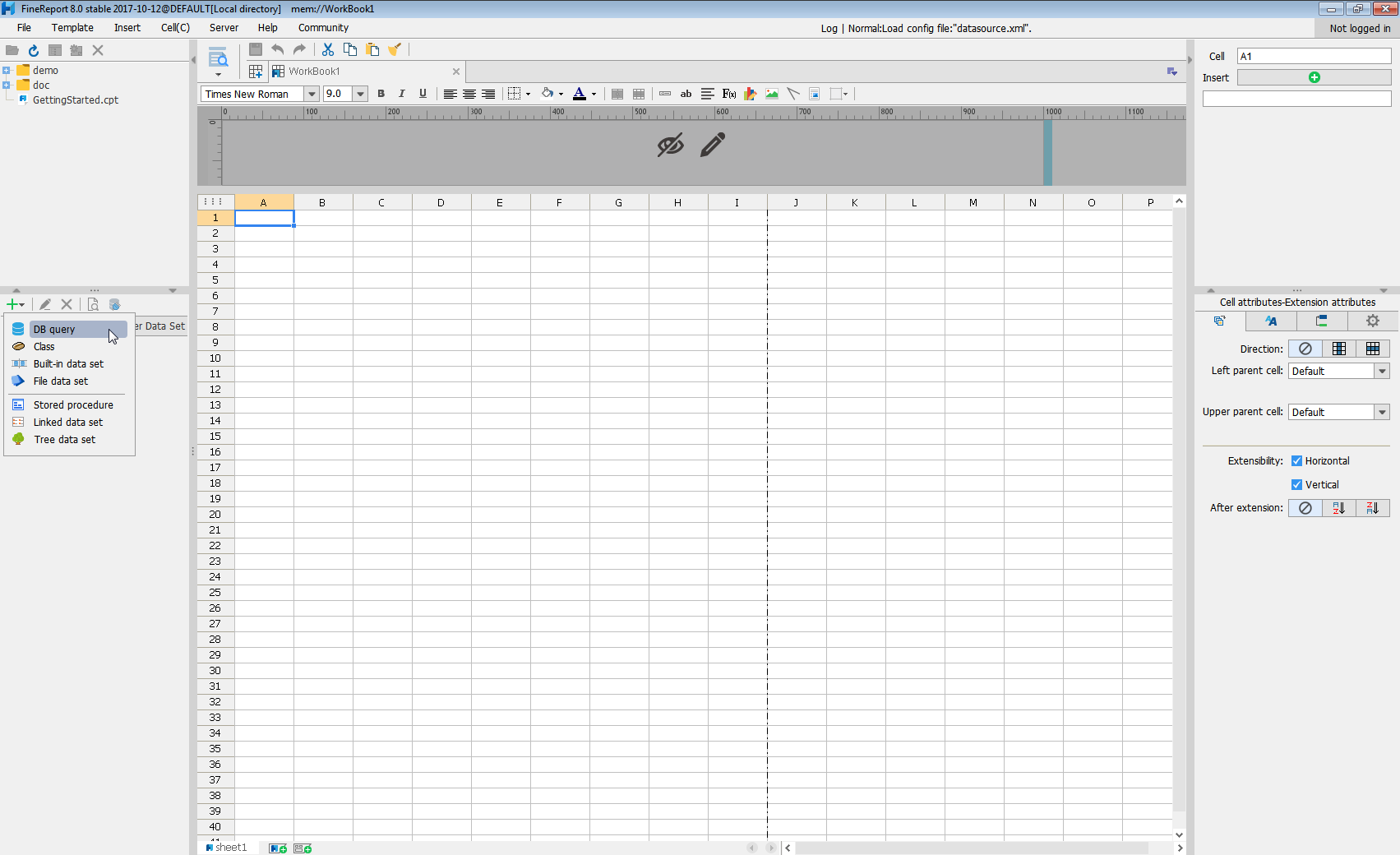
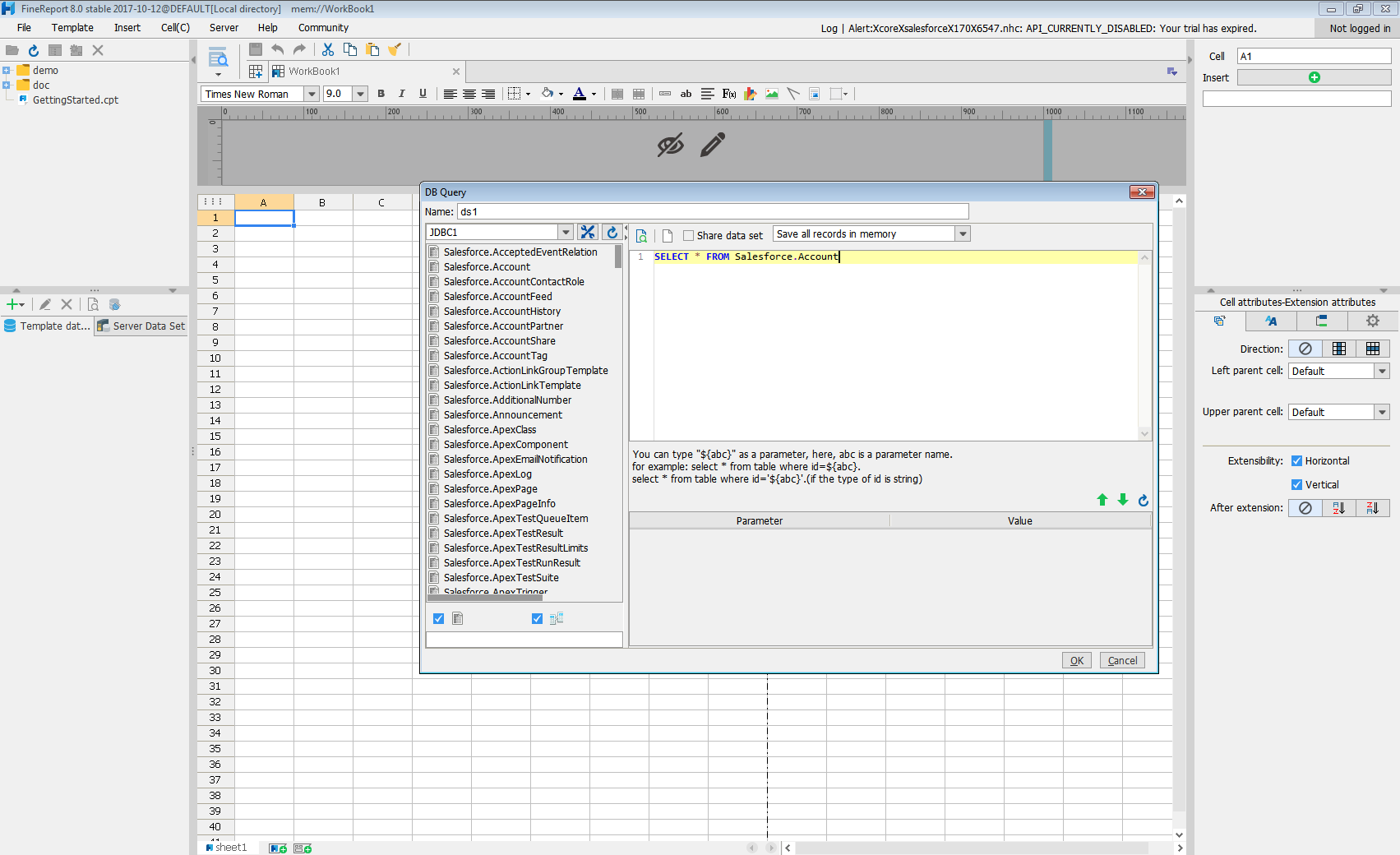
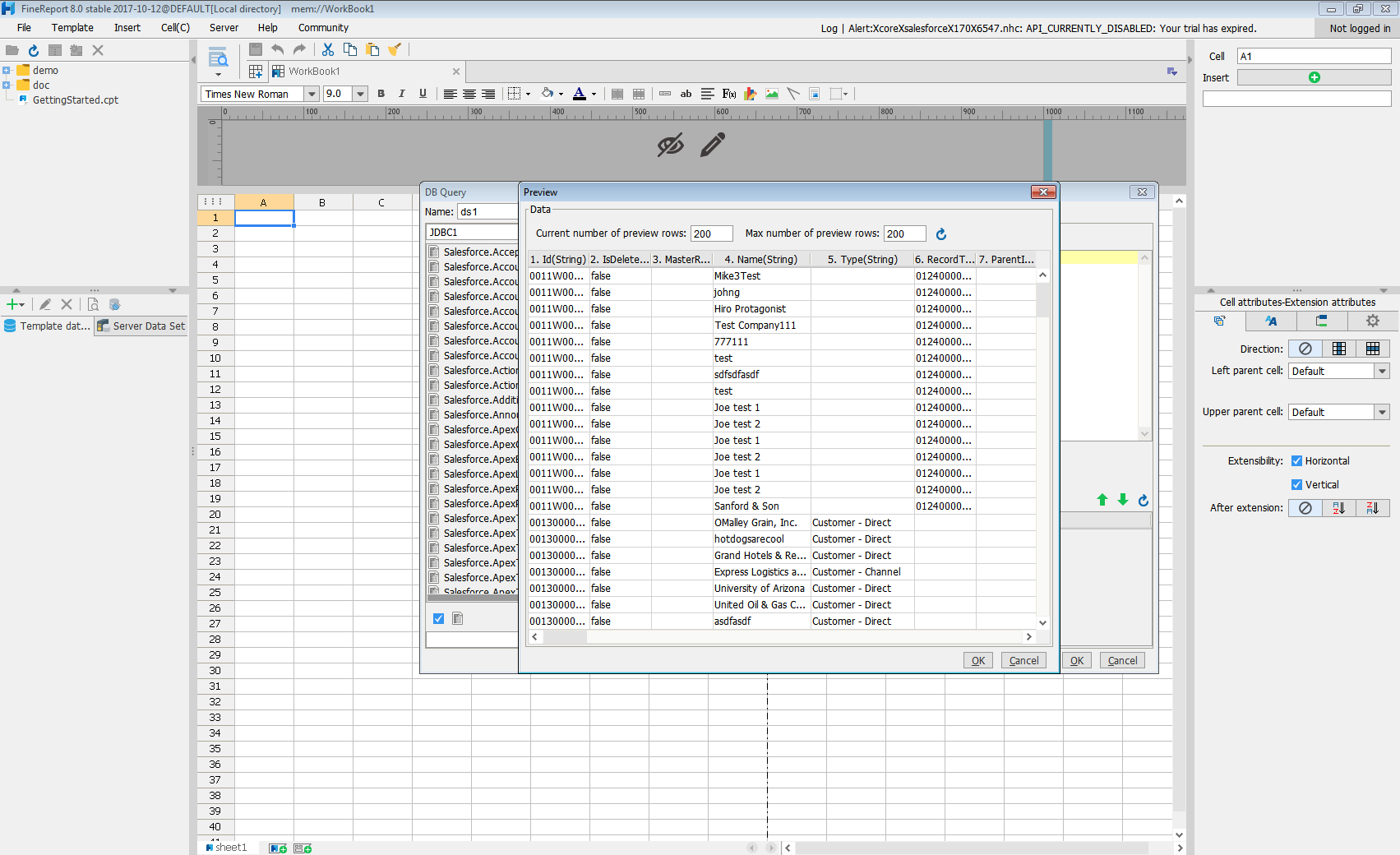
With these simple steps, Azure Data Lake Storage can be used as a JDBC data source in FineReport.







